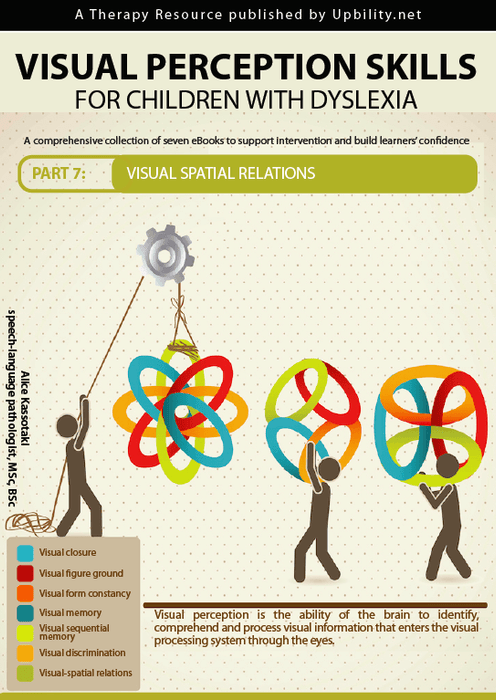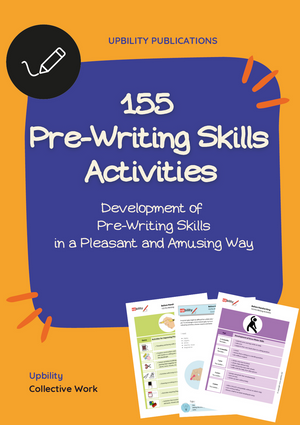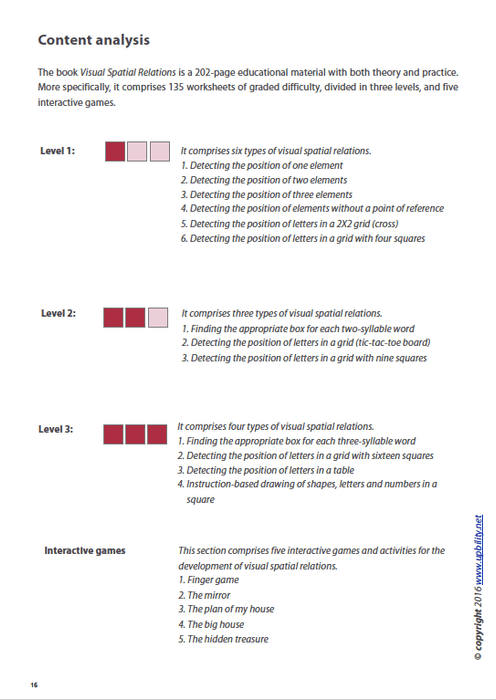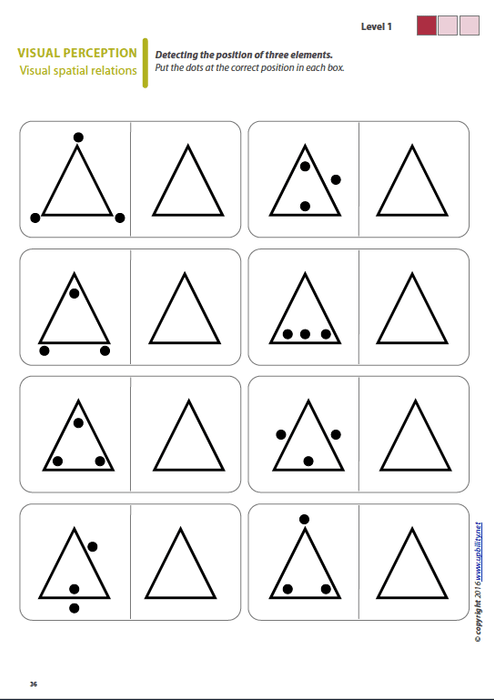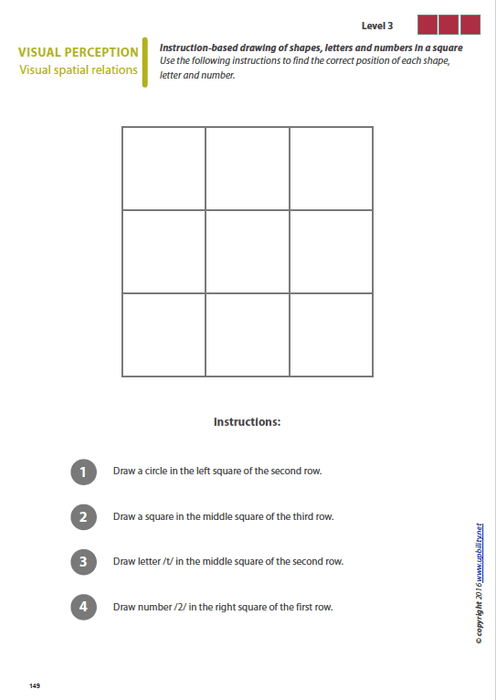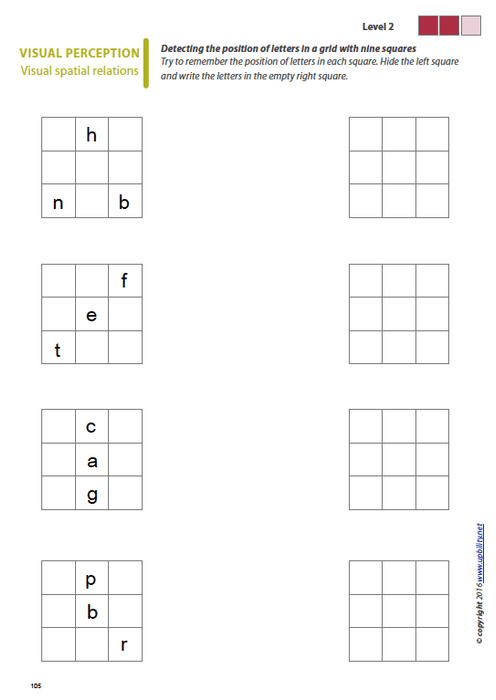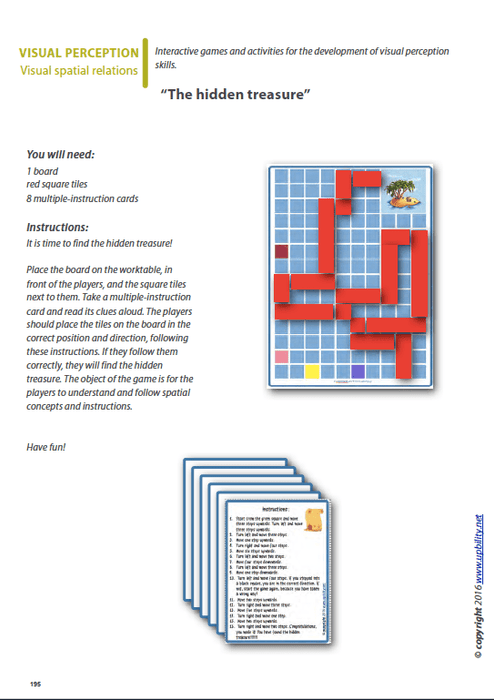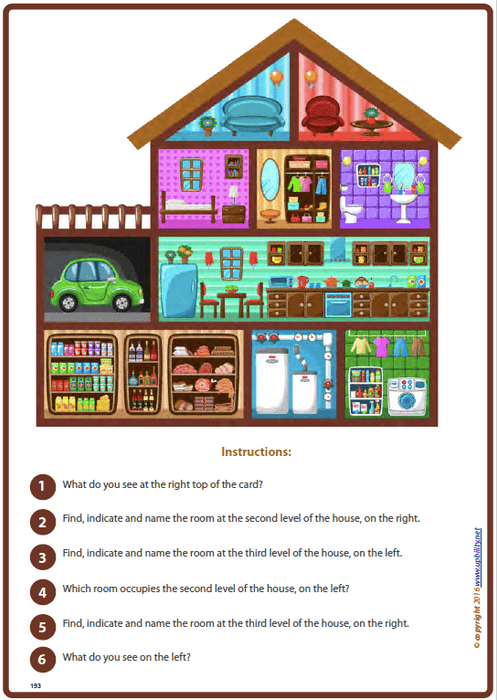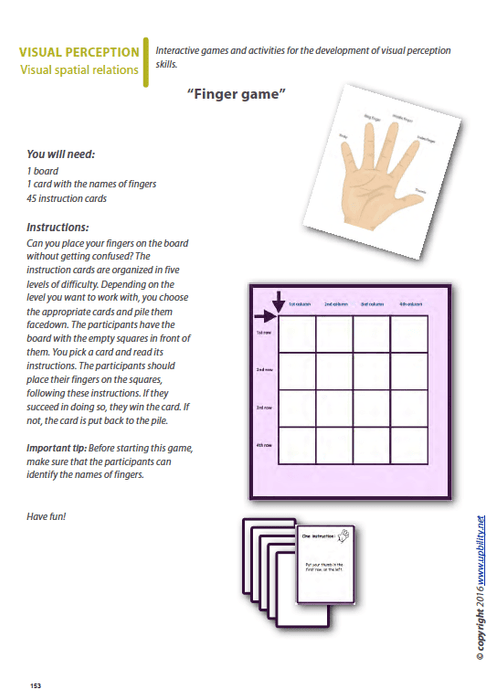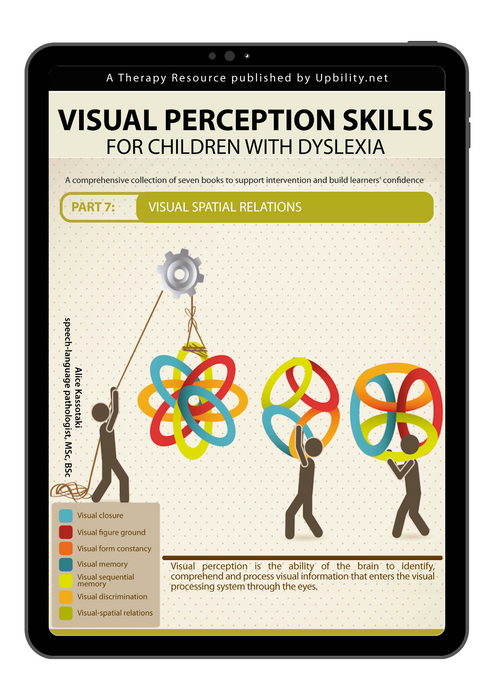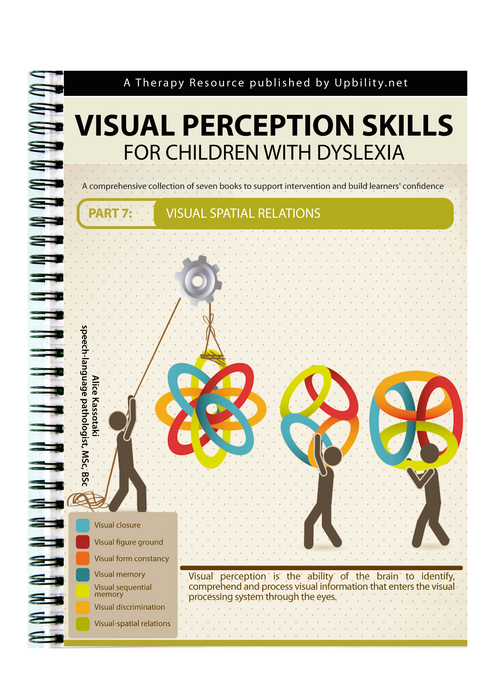-
Visual Spatial Relations
Age Group : 6+
Laid out in a colourful and easy-to-use format, it is addressed to special education needs teachers, occupational therapists, logopedists, parents and schoolteachers who aim to support their children in developing and strengthening their skills. It introduces a set of games and activities that build and enhance visual perceptual skills in an enjoyable and interactive way!
Visual spatial awareness denotes the ability to understand spatial concepts and directions, necessary for interacting with the outside world. It also involves processing outside information and reasoning with it through visual representation in the mind. Along with quantitative and verbal ability, it plays a key role in developing expertise in learning and work settings as well as in determining orientation, laterality and directionality. People with visuospatial deficits have poor performance in sports and suffer from coordination and balance problems. They can also find it difficult to perform rhythmic activities. Furthermore, they are clumsy and tend to reverse forms and letters / syllables, including “o” and”8” or “ma” and am”.
The book includes, inter alia:
- 135 worksheets;
- activities aiming at detecting elements with or without a point of reference;
- activities aiming at detecting letters in several types of grids and tables;
- activities aiming at finding the appropriate boxes for two-syllable and three-syllable words;
- activities requiring learners to follow their teacher’s instructions and draw letters and numbers inside squares, as well as
- interactive games and activities.
Visual perceptual skills influence several aspects of children’s development and everyday life, ranging from (mixed) motor skills to essential life aptitudes.
-
Theoretical background
- Visual perception, definition, categories
- Visual perception and dyslexia
- Visual spatial relations, definition
- Significance
- Visual spatial deficits
- Compensatory strategies
- Visual spatial relations and academic skills
- Conclusion
- Visual spatial skills: Everyday practice
- Perception and orientation
- Content analysis
Practice activities
Level 1: Visual spatial awareness activities
- Detecting the position of one element
- Detecting the position of two elements
- Detecting the position of three elements
- Detecting the position of elements without a point of reference
- Detecting the position of letters in a 2x2 grid (cross)
- Detecting the position of letters in a grid with four squares
Level 2: Visual spatial awareness activities
- Finding the appropriate box for each two-syllable word
- Detecting the position of letters in a grid (tic-tac-toe board)
- Detecting the position of letters in a grid with nine squares
Level 3: Visual spatial awareness activities
- Finding the appropriate box for each three-syllable word
- Detecting the position of letters in a grid with sixteen squares
- Detecting the position of letters in a table
- Instruction-based drawing of shapes, letters and numbers in a square
Interactive games and activities
-
| Type: |
Paper or PDF file
|
|
SKU:
|
EN-EB1036
|
|
Number of pages:
|
202
|
| Dimensions: |
8.27 x 11.69 inches
|
| Author: |
Alice Kassotaki - Speech Language Pathologist MSc, BSc
|
| Translation & Proofreading: |
Maria Rigli |
Year of publication:
|
2016 |
